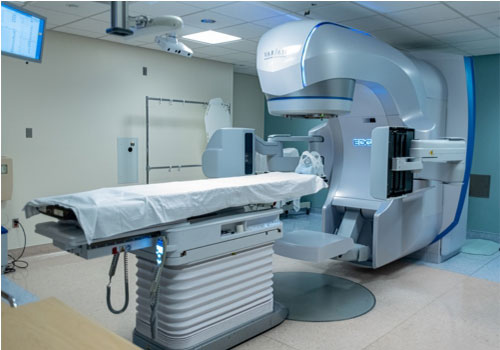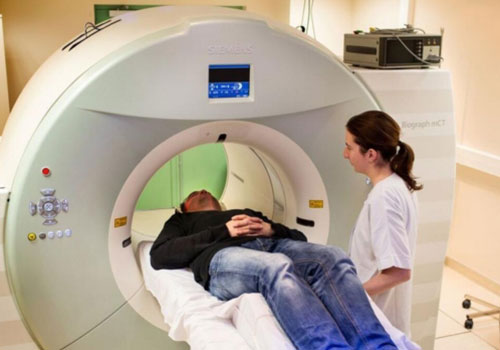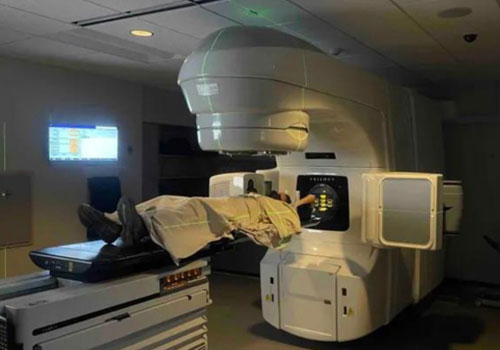Radiation Therapy Techniques
Radiation Therapy Types and Techniques
Radiation therapy is widely used to treat many types of cancers. However, due to the significant investment required for radiation therapy machines, very few centers in Hyderabad offer this treatment. Dr Prapul Kumar Mandari is a senior consultant Radiation Oncologist at Omega Hospital Banjara hills and Gachibowli in Hyderabad, which is equipped with the latest and most advanced radiation therapy machines to provide high-quality treatment. If you are seeking radiation therapy in Hyderabad, consider consulting Dr Prapul Kumar Mandari to discuss your specific case. On this page, we provide a high-level overview of the top nine most commonly used radiation therapy procedures. For detailed information about each procedure, including preparation requirements, potential side effects, post-procedure precautions, and FAQs, click the "Learn More" button.
Types

Radical Radiation
It is a type of radiation using high doses to shrink and remove the tumor with the intent of curing your cancer and prolonging your life
Adjuvant Radiation
This radiation is given after the primary modality treatment to kill the microscopic disease there by preventing recurrence


Neoadjuvant Radiation Therapy
This form of radiation which is given as first step to reduce the tumor size and make amenable for surgery later
Paliative Radiation
The aim of this radiation is to control and relieve the symtoms of cancer and improve quality of life.
Example:- To relieve bone pain, spinal cord compression, SVC Obstruction Bleeding from tunnel

Techniques

Cobalt
Using Cobalt - 60 sources which is almost obselete in India
2DRT / Conventional
It is a two dimentional technique for delivering radiation where two to four beams are used to cure cancer often reffered to as "CHAPATI TECHNIQUE" and used by various government schemes


3DCRT
(3-Dimensional Conformal Radiotherapy)
This is the latest conventional form of therapy where specialists use advanced technology to deliver a high dose of radiation to cancer cells from various angles while minimizing exposure to surrounding healthy tissues. The treatment process involves using a computer to create a 3-D image of the tumor. This therapy is effective for treating both cancerous and noncancerous tumors in the body. For the best radiation therapy in Hyderabad, you can consult with Dr Prapul Kumar Mandari .
IMRT
(Intensity Modulated Radiotherapy)
This type of conformal radiotherapy utilizes computer-controlled linear accelerators to deliver precise radiation doses directly to a tumor. It provides optimal protection for healthy tissue by focusing radiation beams on the most aggressive tumor cells. This method divides the treatment field into multiple segments, using various beam angles and thousands of segments to target the tumor accurately. It is an advanced form of 3D Conformal Radiation Therapy (3D-CRT) and features high precision, requiring inverse treatment planning software to calculate the optimal beam distribution.


IGRT
(Image Guided Radiotherapy)
This method is an advanced version of Intensity Modulated Radiation Therapy (IMRT) and is used for tumors located in areas of the body that move, such as the lungs. It incorporates computer-generated images before each radiation dose to ensure precise accuracy. This radiotherapy technique uses scans and X-rays to visualize the size, shape, and position of the cancer, ensuring that the patient is correctly positioned during treatment. For tumors that may move during treatment, such as those in the prostate gland, the technique minimizes the risk of exposure to surrounding healthy tissues by adjusting the intensity of the radiation beam as needed.
Tomotherapy
This advanced cancer treatment combines Intensity Modulated Radiation Therapy (IMRT) and Image-Guided Radiation Therapy (IGRT) to accurately confirm the size and position of the tumor before administering treatment. It uses a precise radiation beam to destroy or shrink tumors, particularly those located in sensitive or hard-to-reach areas of the body. This method is effective in reducing symptoms of cancer in later stages by focusing higher doses of radiation on the tumor, thereby enhancing treatment efficacy and minimizing exposure to healthy tissues. Dr Prapul Kumar Mandari , a leading cancer specialist in Hyderabad, will assess the type and location of your tumor to determine if this treatment is suitable for your case.


Rapid Arc
(Volumetric Modulated Arc therapy)
In this advanced radiation therapy, treatment is delivered in a single rotation of the gantry around the body, without utilizing different angles. Known as Rapid Arc (Volumetric Modulated Arc Therapy), this method is used to treat tumors near sensitive organs or large areas of the body with irregular boundaries. Rapid Arc features highly conformal radiation beam distributions with focused volume coverage, which helps spare surrounding healthy tissues. This sophisticated treatment is designed for cases where precise, shaped radiation is required, and it is especially beneficial for patients needing a longer treatment duration. For assistance with this treatment, feel free to contact Dr Prapul Kumar Mandari , a leading radiation oncologist.
SRT/SRS
(Stereotactic Radiosurgery)
This modern form of radiation therapy involves a team of specialists and does not require any surgical incisions. Using 3-D computerized imaging, it targets photon beams to deliver a highly focused radiation beam to a precise location in a single session, minimizing impact on surrounding healthy tissues. This technique is used to treat small tumors and various issues in the liver, lungs, and other body parts, as well as functional abnormalities of the brain. Stereotactic Radiosurgery (SRS) delivers a high dose of radiation in a single day, while Stereotactic Radiotherapy (SRT), also known as Stereotactic Body Radiotherapy (SBRT), is administered over multiple days. Both treatments are performed on an outpatient basis.


Total Body Radiotherapy
As the name describes, this radiation therapy is given to the entire body. In this, lower doses are given to the patient multiple times a day for three to five days. The treatment is used for different reasons- the first is to destroy abnormal cells in the areas of the body (skin, bones, nervous system) where chemotherapy can’t reach easily. The second reason is to suppress the immune system of the patient because if the patient is getting bone marrow or stem cells from someone, then the body may perceive it as a foreign cell, so patients have to undergo this therapy.
Total Skin Electron Therapy
In this therapy, the entire skin is exposed to the prescribed radiation beam while protecting other organs from radiation. Low-energy electrons are used specifically to target and destroy tumor cells. To prevent treatment-related side effects, sensitive areas such as the eyes, nails, lips, ears, feet, and hands are covered. This radiation therapy is primarily used to treat Cutaneous T-Cell Lymphoma (CTCL) and mycosis fungoides. Treatments are typically administered three to four days a week over a period of approximately three to nine weeks. This therapy is also known as High-Dose Total Skin Electron Therapy (HDTSe). You can access this type of radiation therapy at an affordable rate by contacting us.


Brachytherapy
This type of internal radiation therapy, also known as brachytherapy, is used to treat various cancers, including prostate cancer, skin cancer, breast cancer, uterine cancer, cervical cancer, and eye cancer. In this treatment, radioactive material, contained within a capsule, wire, or seed, is placed inside the body near the tumor. Depending on the stage and location of the tumor, these implants can be either temporary or permanent. Brachytherapy is particularly effective at targeting cancer cells while minimizing damage to adjacent healthy tissues. For radiation therapy in Hyderabad, contact Dr Prapul Kumar Mandari .
